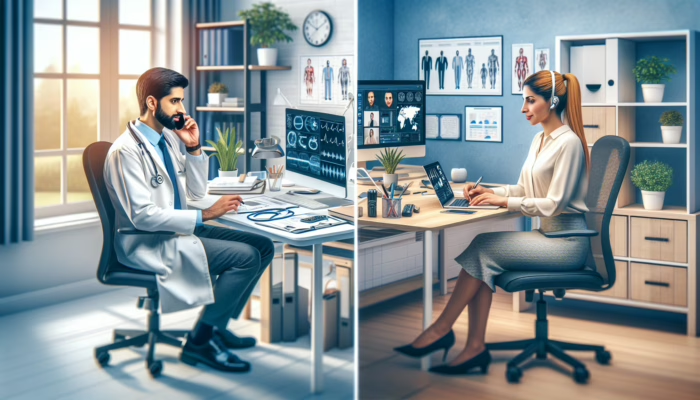Comprehensive Exploration of Ear Infections: Understanding Their Types and Treatments
Gaining a thorough understanding of the various types of ear infections is essential for everyone, especially adults who may be more vulnerable to these painful conditions. There are three primary categories that one must be aware of: Acute Otitis Media (AOM), Otitis Externa (commonly referred to as Swimmer’s Ear), and Chronic Otitis Media. Each category exhibits distinct characteristics, symptoms, and treatment protocols that necessitate careful attention and comprehension for effective management and recovery.
Identifying Symptoms and Treatment for Acute Otitis Media (AOM)

Acute Otitis Media (AOM) signifies a sudden infection of the middle ear, often resulting in considerable discomfort and distress. This condition is typically marked by symptoms such as intense ear pain, fever, and, in some instances, hearing loss. AOM is frequently triggered by bacterial or viral infections, often stemming from preceding respiratory infections, allergies, or sinus infections that cause inflammation and fluid accumulation in the middle ear space. The rapid onset of these symptoms can be alarming, necessitating immediate medical attention and intervention.
The distressing symptoms associated with AOM can be quite severe. Adults may experience a sharp, throbbing pain in the ear, coupled with fever and irritability. If left untreated, AOM carries the risk of permanent hearing impairment, highlighting the importance of timely diagnosis and intervention. Typically, healthcare providers prescribe antibiotics to combat bacterial infections, while cases caused by viruses may require symptomatic relief through medications such as pain relievers or anti-inflammatories to manage discomfort effectively and promote recovery.
The global prevalence of AOM can vary significantly, influenced by factors such as environmental conditions, access to healthcare, and individual health status. In developing regions, where healthcare resources are often limited, untreated AOM can lead to severe complications, including the potential spread of infection. Recognising how AOM presents itself and understanding its possible ramifications is crucial for anyone experiencing any form of ear discomfort or pain, as it can lead to more serious health concerns if not addressed promptly.
Understanding Otitis Externa: Essential Insights on Swimmer’s Ear
Otitis Externa, more commonly referred to as Swimmer’s Ear, is an infection affecting the outer ear canal, primarily caused by excessive moisture exposure. This condition is often observed in individuals who swim frequently, hence the name. The infection typically arises when bacteria or fungi enter the ear canal, resulting in inflammation, pain, and itching sensations that can be quite uncomfortable and distressing for those affected.
Common symptoms of Otitis Externa include persistent itching within the ear canal, noticeable redness, and pain that intensifies when pulling on the earlobe. In more severe instances, discharge from the ear may occur, which can be concerning for those affected. Treatment for this condition usually involves thorough cleaning of the ear canal followed by the application of antibiotic or antifungal ear drops to effectively eliminate the infection and restore ear health, ensuring that individuals can return to their normal activities without discomfort.
The incidence of Otitis Externa is notably higher in warmer climates and regions characterised by high humidity levels. Therefore, individuals living in such areas must take proactive measures to prevent this condition, such as ensuring that the ears are thoroughly dried after swimming or showering and avoiding the use of cotton swabs that can irritate the delicate ear canal lining. Adopting these preventive measures can significantly reduce the risk of developing this uncomfortable ear infection, promoting better ear health and overall well-being.
Addressing the Challenges of Chronic Otitis Media
Chronic Otitis Media is characterised by a persistent state of inflammation or infection of the middle ear, lasting for an extended duration and often resulting in ongoing health challenges. This condition can lead to recurrent ear infections, persistent hearing loss, and fluid accumulation that complicates the overall ear health situation, making it essential for individuals to be vigilant about their symptoms and seek appropriate care.
Typically, Chronic Otitis Media develops as a consequence of repeated instances of Acute Otitis Media that have not been effectively treated. Adults suffering from this condition may report ongoing discomfort, a sensation of fullness in the ear, and diminishing hearing capabilities. This chronic issue can significantly disrupt daily activities, impacting communication and overall well-being, which underscores the need for effective management strategies.
Addressing Chronic Otitis Media often requires more than the administration of antibiotics. In certain cases, surgical intervention may be warranted, particularly if there is considerable fluid buildup or damage to the ear’s structures. Surgical procedures such as tympanoplasty or the insertion of tympanostomy tubes are designed to relieve pressure and avert future infections effectively, allowing patients to regain their quality of life and auditory function.
Understanding the complexities of Chronic Otitis Media is essential, as untreated cases can lead to severe complications. Recognising the signs and symptoms associated with this condition and seeking timely medical assistance can prevent long-term damage and significantly enhance the quality of life for adults facing these ear health challenges. Proactive management is key to ensuring effective recovery and minimising health risks.
Identifying Symptoms and Diagnosing Ear Infections

Recognising the various symptoms associated with ear infections is vital for ensuring timely diagnosis and appropriate treatment. The signs of ear infections in adults can encompass ear pain, fever, hearing loss, and potential discharge. Familiarising oneself with these symptoms empowers individuals to seek medical attention when necessary, facilitating prompt intervention and care that can prevent the progression of the infection and its associated complications.
Essential Symptoms of Ear Infections to Monitor
Experiencing ear pain as an adult can be both perplexing and alarming. The pain may present as sharp, throbbing, or a dull ache that lingers, signalling potential issues in the ear. Accompanying symptoms typically include fever, which can range from mild to high, along with feelings of fatigue or irritability. Another prominent indication of an ear infection is hearing loss, as swelling and fluid accumulation within the ear can impede effective sound transmission, leading to increased concern and urgency for treatment.
The occurrence of discharge from the ear may also arise, indicating a potential infection. This discharge can vary in colour and consistency, ranging from clear fluid to pus, which may warrant immediate medical evaluation. These symptoms can escalate quickly, making it imperative to remain attuned to your body and seek medical advice if they persist beyond a couple of days or worsen over time, as early intervention is crucial for effective recovery.
Understanding the diverse array of symptoms linked to ear infections can facilitate more effective communication with healthcare providers, ensuring that appropriate actions are taken swiftly to address the condition and mitigate any potential complications. Being proactive about one’s health can significantly influence treatment outcomes and overall ear health.
Effective Diagnostic Techniques for Accurate Ear Infection Assessment
When diagnosing ear infections, healthcare professionals utilise a variety of techniques to accurately assess the condition. One of the most widely used methods is otoscopy, where a doctor employs an otoscope to visually inspect the ear canal and eardrum for signs of infection or fluid accumulation. This visual examination is crucial for identifying the underlying issues contributing to the patient’s symptoms, allowing for a targeted approach to treatment.
Another valuable diagnostic tool is tympanometry, which measures the movement of the eardrum in response to variations in air pressure. This test can help determine the presence of fluid in the middle ear, a common characteristic of infections. Additionally, audiometry assesses the patient’s hearing capabilities, providing further insight into how the infection may be affecting auditory function and overall ear health. These assessments are vital for developing a comprehensive treatment plan tailored to the individual’s needs.
These diagnostic methods offer invaluable information that aids in determining the best course of treatment. Accurately identifying the specific type of ear infection allows for a more tailored approach, ensuring a better outcome for the patient and facilitating quicker recovery, which is essential for maintaining overall ear health and preventing further complications.
Recognising When to Seek Urgent Medical Assistance for Ear Infections

Recognising the appropriate moments to seek medical attention for ear infections is crucial in preventing potential complications. Adults who experience severe pain, particularly when accompanied by a high fever or sudden hearing loss, should seek immediate medical care. These symptoms could indicate a serious infection requiring urgent intervention, as they may lead to more severe health consequences if not addressed promptly.
Furthermore, if symptoms persist for more than a couple of days without showing improvement, it is advisable to consult a healthcare professional. Ignoring prolonged symptoms can lead to serious complications such as chronic ear infections or even the potential spread of infection to nearby structures, including the brain, which can be life-threatening. Taking symptoms seriously can significantly influence recovery and overall health outcomes, ultimately contributing to better ear health.
Being vigilant about your health and not dismissing signs of severe discomfort can be a lifesaver. Understanding when to take action can significantly influence recovery and overall health outcomes, ultimately contributing to better ear health and well-being.
Unpacking the Complications of Untreated Ear Infections
The implications of untreated ear infections can be severe and far-reaching. Chronic or neglected infections can lead to irreversible hearing loss, profoundly impacting one’s quality of life. Beyond hearing impairment, complications such as mastoiditis can occur, where the infection spreads to the mastoid bone behind the ear, necessitating aggressive treatment and possible hospitalization. These serious outcomes highlight the urgency of addressing ear infections in a timely manner.
Additionally, the risk of the infection spreading to the brain is a serious concern, potentially leading to life-threatening conditions such as meningitis or brain abscesses. Understanding these potential complications underscores the critical importance of seeking medical advice promptly to manage ear infections effectively and prevent more serious health issues from arising. Early intervention can play a vital role in safeguarding one’s health and well-being.
Taking proactive steps to address ear infections can safeguard against these severe consequences. Awareness of the risks associated with untreated infections can motivate individuals to prioritise their health and seek the necessary treatment to protect their overall well-being, ensuring a better quality of life.
Implementing Preventive Measures for Optimal Ear Health
Prevention is always more effective than treatment, and when it comes to ear infections, there are several strategies that individuals can adopt to minimise their risk. Avoiding excessive water exposure, particularly in crowded swimming pools, can significantly decrease the likelihood of developing infections such as Otitis Externa. Being mindful of swimming habits can protect ear health.
Maintaining good hygiene practices is also imperative. Regular hand washing and refraining from touching or inserting objects into the ears can help prevent the introduction of bacteria or fungi that lead to infections. Additionally, ensuring that vaccinations are current—such as the pneumococcal and influenza vaccines—can further reduce the risk of infections that might lead to ear problems. Staying informed about vaccinations is a key aspect of preventive health.
Understanding these preventive measures empowers adults to take control of their ear health. Simple lifestyle adjustments can lead to substantial reductions in the risk of ear infections, promoting improved health outcomes and overall well-being. Taking charge of one’s health is vital for long-term ear health.
Identifying Risk Factors for Developing Ear Infections
Recognising the risk factors associated with ear infections in adults is crucial for mitigating their frequency and severity. Several environmental, lifestyle, and genetic factors contribute to the likelihood of developing these infections, making awareness essential for proactive ear health management and prevention strategies.
Environmental Influences on Ear Infection Susceptibility
Exposure to environmental pollutants represents a significant risk factor for ear infections. Individuals residing in areas with elevated levels of smoke, allergens, or pollutants may find themselves more susceptible to infections. For instance, exposure to secondhand smoke can irritate the Eustachian tubes, leading to blockages and subsequent infections. Being aware of environmental triggers can help individuals take preventive measures.
High altitudes can also exacerbate the risk of ear infections. Changes in atmospheric pressure can affect the middle ear, particularly during activities such as flying or diving. Recognising these environmental triggers encourages proactive measures to avoid or minimise exposure, ensuring better ear health and reducing the likelihood of infections. Awareness of one’s surroundings is essential for maintaining optimal ear health.
Creating a living environment that promotes clean air quality and minimising exposure to known irritants can significantly decrease the risk of ear infections, particularly for individuals already predisposed to such conditions, ensuring a healthier lifestyle overall.
Lifestyle Choices and Health Conditions That Elevate Risk
Certain lifestyle choices and pre-existing health conditions can elevate the risk of developing ear infections. Individuals with diabetes or immune system disorders may find themselves more susceptible due to a compromised ability to fend off infections effectively, which can lead to recurrent ear health issues. Understanding these health conditions is vital for prevention.
Additionally, smoking serves as a prominent risk factor, as it can damage the Eustachian tubes and promote fluid accumulation in the middle ear. Furthermore, adults who frequently consume alcohol may also be at heightened risk, as excessive drinking can impair immune function and increase vulnerability to infections. Making informed choices regarding health and wellness can significantly contribute to reducing the likelihood of developing ear infections and improving overall ear health.
Recognising the interplay between lifestyle choices and ear infection risk can guide individuals towards better habits. Being proactive about health can lead to significant improvements in ear health and overall well-being, enhancing the quality of life.
Genetic Factors Influencing Susceptibility to Ear Infections
Genetic predispositions can significantly influence an individual’s susceptibility to ear infections. Anatomical differences in the structure of the Eustachian tubes, for example, can make certain individuals more prone to recurrent infections. A family history of ear infections may indicate a genetic component, necessitating increased awareness and preventive measures to mitigate risks effectively.
Recognising genetic predispositions can encourage proactive monitoring of ear health. Individuals with a family history of ear infections should consult with healthcare providers regarding preventive strategies and early intervention approaches to mitigate risks effectively. Understanding one’s genetic background can empower individuals to take charge of their ear health proactively.
Understanding the influence of genetics on ear health empowers individuals to take preventive steps to reduce their risk of infections, ultimately leading to better health outcomes and enhanced quality of life.
Age-Related Changes Impacting Ear Health
As adults age, the structure and function of the ear can change, increasing susceptibility to infections. The Eustachian tubes may become less efficient at equalising pressure and draining fluid, creating an environment conducive to infections, particularly in older adults. Recognising these changes is essential for effective ear health management.
Moreover, age-related health conditions, such as arthritis or other chronic diseases, can further complicate ear health, making it imperative for aging adults to remain vigilant about their ear health. Regular check-ups can help identify potential issues before they escalate into more serious conditions, ensuring a proactive approach to ear care.
Maintaining awareness of how aging impacts ear health can encourage older adults to seek proactive care, ensuring better management of their overall health and the prevention of ear infections, thus enhancing their quality of life.
Occupational Hazards Increasing Ear Infection Risks
Certain occupations can heighten the risk of ear infections, particularly those involving exposure to loud noises or water. For example, swimmers, divers, or individuals working in environments with frequent moisture exposure are at increased risk for conditions like Otitis Externa, which can be exacerbated by their working conditions. Understanding these risks is vital for preventive strategies.
Implementing protective measures, such as wearing earplugs or protective headgear, can significantly mitigate the risk of developing ear infections in these professions. Additionally, ensuring proper ear hygiene is essential for those who face occupational hazards, helping to maintain ear health and prevent infections from occurring.
Recognising the potential risks associated with specific occupations can motivate individuals to take preventive action, safeguarding their ear health while pursuing their careers effectively and ensuring long-term well-being.
Effective Prevention Strategies for Ear Infections
Implementing effective prevention strategies is crucial for reducing the incidence of ear infections. By understanding the best practices for maintaining ear health, individuals can take proactive measures to keep their ears healthy and infection-free, ultimately enhancing their quality of life.
Essential Hygiene Practices to Safeguard Ear Health
Maintaining proper hygiene stands as one of the simplest yet most effective strategies for preventing ear infections. Regular hand washing can substantially reduce the risk of introducing harmful bacteria into the ears, which can lead to infections. Additionally, minimising the tendency to touch the ears unnecessarily is vital for reducing exposure to germs that may cause infections, ensuring a healthier ear environment.
It is equally important to keep the ear canal clean and dry, especially after swimming or showering. Gently drying the ears with a towel can help prevent moisture buildup, a known contributor to infections. Understanding the significance of hygiene can empower individuals to adopt healthier habits that support their ear health and overall well-being, reducing the likelihood of discomfort and complications.
Emphasising the role of hygiene in preventing ear infections can lead to significant improvements in overall ear health, thereby reducing the likelihood of discomfort and potential complications associated with infections. Taking proactive steps to maintain ear hygiene is key for long-term ear health.
Proactive Ear Care Tips for Effective Infection Prevention
Taking care of your ears extends beyond basic hygiene; it involves adopting specific practices that promote optimal ear health. For instance, avoiding the insertion of cotton swabs or other objects into the ear canal can prevent irritation and potential damage to the delicate ear structures, preventing unnecessary complications.
Using earplugs while swimming can also minimise the risk of Otitis Externa by protecting the ear canal from unwanted water exposure. Additionally, refraining from exposure to loud noises and wearing protective headgear when necessary can contribute to preserving hearing and preventing infections. These simple yet effective measures can significantly enhance ear health and prevent infections.
By implementing these ear care tips, individuals can take charge of their ear health, resulting in a reduced risk of infections and related complications that can arise from neglecting ear hygiene. Being proactive is essential for long-term ear health and well-being.
The Critical Role of Vaccinations in Preventing Ear Infections
Vaccinations play a vital role in preventing ear infections, particularly those caused by bacterial agents that can lead to conditions such as Acute Otitis Media. Vaccines like the pneumococcal and influenza vaccines are instrumental in providing protection against infections that could potentially lead to ear complications. Staying informed about vaccinations is essential for maintaining optimal ear health.
Ensuring that individuals, especially children and older adults, are up-to-date on their vaccinations can significantly lower the incidence of ear infections. Consulting healthcare providers about recommended vaccinations can empower individuals to take proactive control of their ear health, ensuring they are equipped to prevent infections effectively and safeguarding their overall well-being.
Recognising the powerful impact of vaccinations on preventing ear infections encourages individuals to prioritise their health and seek appropriate immunisations to protect their well-being and prevent complications.
Comprehensive Treatment Options for Ear Infections
Understanding the array of treatment options available for ear infections is essential for effective management and recovery. Depending on the severity and type of infection, various strategies may be employed, ranging from medications to surgical interventions to restore ear health and alleviate symptoms.
Utilising Antibiotics for Effective Treatment of Bacterial Ear Infections
When dealing with bacterial ear infections, antibiotics are often the first line of defence. Prescribed by healthcare providers, these medications are crucial for treating Acute Otitis Media and preventing complications that may arise from untreated infections. The choice of antibiotic will depend on the specific bacteria involved and any potential allergies that the patient may have, which is vital for ensuring effective treatment.
It is vital for patients to adhere to the prescribed course of antibiotics fully, even if symptoms begin to improve before completion. This practice helps prevent antibiotic resistance and ensures that the infection is adequately addressed, leading to better health outcomes. Understanding the importance of completing the course of antibiotics is crucial for effective treatment.
Additionally, being aware of potential side effects is essential for patients. Some individuals may experience gastrointestinal discomfort or allergic reactions, making it important to communicate any concerns with the prescribing physician to manage treatment effectively. Staying informed about treatment options can empower patients to engage actively in their recovery process.
Understanding the role of antibiotics in treating ear infections empowers patients to engage actively in their treatment and recovery, ensuring a more favourable outcome and improved ear health. Taking an informed approach to treatment is essential for achieving recovery.
Effective Pain Management Strategies for Ear Infections
Managing pain associated with ear infections is a critical component of treatment. Over-the-counter pain relievers such as ibuprofen or acetaminophen can effectively offer relief from discomfort and help to reduce fever. Understanding safe dosage guidelines and adhering to recommended dosages is essential for effective pain management and recovery.
For more severe pain, healthcare providers may recommend stronger pain medications or topical treatments to provide relief. Complementary therapies, such as using warm compresses applied to the affected ear, can also offer additional comfort and alleviate discomfort associated with ear infections.
Effective pain management not only alleviates immediate discomfort but also enhances overall recovery. Individuals should feel empowered to discuss their pain levels with healthcare providers to ensure they receive appropriate and effective relief throughout their treatment journey, leading to better health outcomes.
Exploring Surgical Interventions for Persistent Ear Infections
In cases of severe or recurrent ear infections, surgical intervention may become necessary. Procedures such as tympanostomy tube insertion can help drain fluid from the middle ear, alleviating pressure and preventing future infections from occurring. Understanding when surgical options are appropriate is essential for effective management of ear health.
Surgical options are typically considered when conservative treatments have proven ineffective or when complications arise, such as chronic tubal obstruction or significant hearing loss. Understanding the indications for surgery can help individuals recognise when surgical intervention may be necessary for their ear health and well-being.
Consulting with an ear, nose, and throat (ENT) specialist can provide valuable insights into the necessity of surgical intervention and what to expect during the process, ensuring patients are well-informed and prepared for potential treatments. Taking an informed approach to treatment can lead to better health outcomes and a comprehensive understanding of one’s ear health.
Potential Complications and Long-term Effects of Ear Infections
The complications arising from untreated ear infections can have profound and lasting impacts on health and well-being. Understanding these potential consequences is essential for anyone who experiences ear infections, as awareness leads to better proactive management and treatment strategies that can prevent long-term issues.
Understanding Hearing Loss Associated with Untreated Ear Infections
One of the most concerning complications of untreated ear infections is hearing loss. Both temporary and permanent hearing loss can occur as a result of ongoing infections, significantly affecting communication and overall quality of life. For adults, this can lead to social withdrawal, difficulties in professional settings, and emotional distress stemming from impaired hearing, which can be debilitating.
Recognising the signs of hearing loss early on can facilitate timely intervention and management strategies that can mitigate the impact of hearing impairment. Regular hearing assessments and consultations with healthcare providers can help preserve auditory function and overall ear health, enabling individuals to maintain their quality of life.
Understanding the potential for hearing loss underscores the importance of seeking treatment promptly, ensuring that ear health is prioritised for a better quality of life and overall well-being. Early intervention is critical for achieving favourable outcomes.
The Risk of Infection Spread and Associated Health Complications
The risk of infection spreading to nearby structures poses a serious concern with untreated ear infections. Conditions such as mastoiditis, where the infection spreads to the mastoid bone, may arise, necessitating aggressive treatment that can include hospitalization and intravenous antibiotics. Awareness of these risks is essential for preventing severe health consequences.
Moreover, the potential for infection to reach the brain represents a grave concern. Life-threatening conditions such as meningitis can develop, requiring immediate medical attention and intervention to prevent serious health outcomes. Understanding these risks emphasises the importance of proactive healthcare engagement and timely intervention.
Awareness of these severe complications emphasises the importance of proactive healthcare engagement. Recognising the signs of worsening symptoms can lead to timely interventions that protect against serious health risks associated with untreated ear infections, ensuring better health outcomes.
Managing Chronic Conditions Resulting from Ear Infections
Persistent ear infections can lead to chronic conditions that require ongoing management and care. Chronic Otitis Media, which involves continuous inflammation or infection, can be particularly challenging to treat and manage effectively, resulting in persistent discomfort and health challenges.
Patients grappling with chronic ear conditions may require regular medical follow-ups, audiological assessments, and potential surgical interventions to address ongoing issues. Understanding the nature of these chronic conditions can help individuals navigate their treatment options and make informed decisions regarding their ear health, which is vital for long-term well-being.
Proactive management and open communication with healthcare providers are crucial for achieving better outcomes for those experiencing chronic ear infections and related complications. Being informed and proactive can significantly enhance the quality of life for those affected.
Navigating Tinnitus as a Long-term Effect of Ear Infections
Another potential long-term effect of chronic ear infections is tinnitus, characterised by persistent ringing or buzzing in the ears. This condition can be distressing and may significantly impact daily life, leading to difficulties in concentration and sleep disturbances due to the constant sound. Understanding the potential connection between tinnitus and ear infections is essential for effective management.
While not all cases of tinnitus are linked directly to ear infections, recognising the potential relationship can help individuals seek appropriate care and management strategies that address both conditions. Treatment options might include sound therapy, counselling, or lifestyle adjustments to cope with and manage the symptoms effectively, ensuring better quality of life for those affected.
Recognising the relationship between ear infections and tinnitus empowers individuals to take proactive steps in seeking treatment and managing their ear health effectively, ultimately leading to improved well-being.
Addressing Balance Problems Linked to Ear Infections
Infections affecting the inner ear can lead to balance problems, causing symptoms such as dizziness or vertigo. These issues can increase the risk of falls and injuries, particularly among older adults who may already be at risk for such incidents. Understanding the connection between ear infections and balance issues is crucial for maintaining overall safety and well-being.
Seeking medical advice when balance problems arise can lead to effective management strategies, including physical therapy or vestibular rehabilitation to address the underlying issues and improve stability. Being proactive about balance concerns is essential for ensuring safety and preventing complications.
Being aware of the potential for balance-related complications encourages individuals to prioritise their ear health and seek timely care when necessary to prevent these issues from escalating, ultimately enhancing their quality of life.
Frequently Asked Questions Regarding Ear Infections
What are the most prevalent causes of ear infections in adults?
The most common causes of ear infections in adults include respiratory infections, allergies, and sinus infections, which can lead to fluid buildup in the ears and subsequent infection. Understanding these causes is vital for prevention and management.
How can I determine if I have an ear infection?
Symptoms indicative of an ear infection may include ear pain, fever, hearing loss, and discharge from the ear. If you experience these symptoms, it is advisable to consult a healthcare provider for a thorough evaluation and diagnosis, ensuring appropriate treatment is initiated.
Are ear infections considered serious medical conditions?
Yes, ear infections can lead to serious complications if left untreated, including hearing loss and the potential spread of infection to nearby structures, which can pose significant health risks. Recognising the seriousness of these conditions is vital for prompt intervention.
Can I take preventative measures against ear infections?
Absolutely! You can prevent ear infections by maintaining good hygiene, avoiding excessive water exposure, and ensuring that your vaccinations are current to reduce the risk of infections. Taking proactive steps can safeguard your ear health.
What steps should I take if I suspect I have an ear infection?
If you suspect an ear infection, seek medical attention promptly, especially if you experience severe pain, high fever, or sudden hearing loss, as these may indicate a more serious condition requiring immediate care and intervention. Being proactive is essential for effective treatment.
How are ear infections typically treated?
Treatment for ear infections may involve the use of antibiotics for bacterial infections, pain management strategies, and in some cases, surgical interventions to drain fluid and alleviate pressure. Understanding treatment options is crucial for effective recovery.
Is it safe to use ear drops for treating ear infections?
Using ear drops can be safe, but it’s essential to follow a healthcare provider’s instructions carefully to avoid further irritation or complications that may arise from improper use. Adhering to professional guidance is vital for effective treatment.
Can ear infections lead to hearing issues?
Yes, untreated ear infections can result in both temporary and permanent hearing loss, adversely affecting overall quality of life and making early intervention crucial. Recognising the signs early can facilitate timely treatment.
What is the typical recovery time for an ear infection?
Recovery time varies by individual and severity of the infection, but most adults begin to feel better within a few days of appropriate treatment, although complete healing may take longer. Monitoring symptoms is essential for effective recovery.
Are there long-term effects associated with recurrent ear infections?
Recurrent ear infections can lead to chronic conditions, persistent hearing loss, and complications such as tinnitus or balance problems if not managed effectively and promptly. Awareness of potential risks is crucial for preventive care.
Discover more about ear health at X!
The post Ear Infections in Adults: Causes and Effective Treatments appeared first on The Microsuction Ear Wax Removal Network.





















